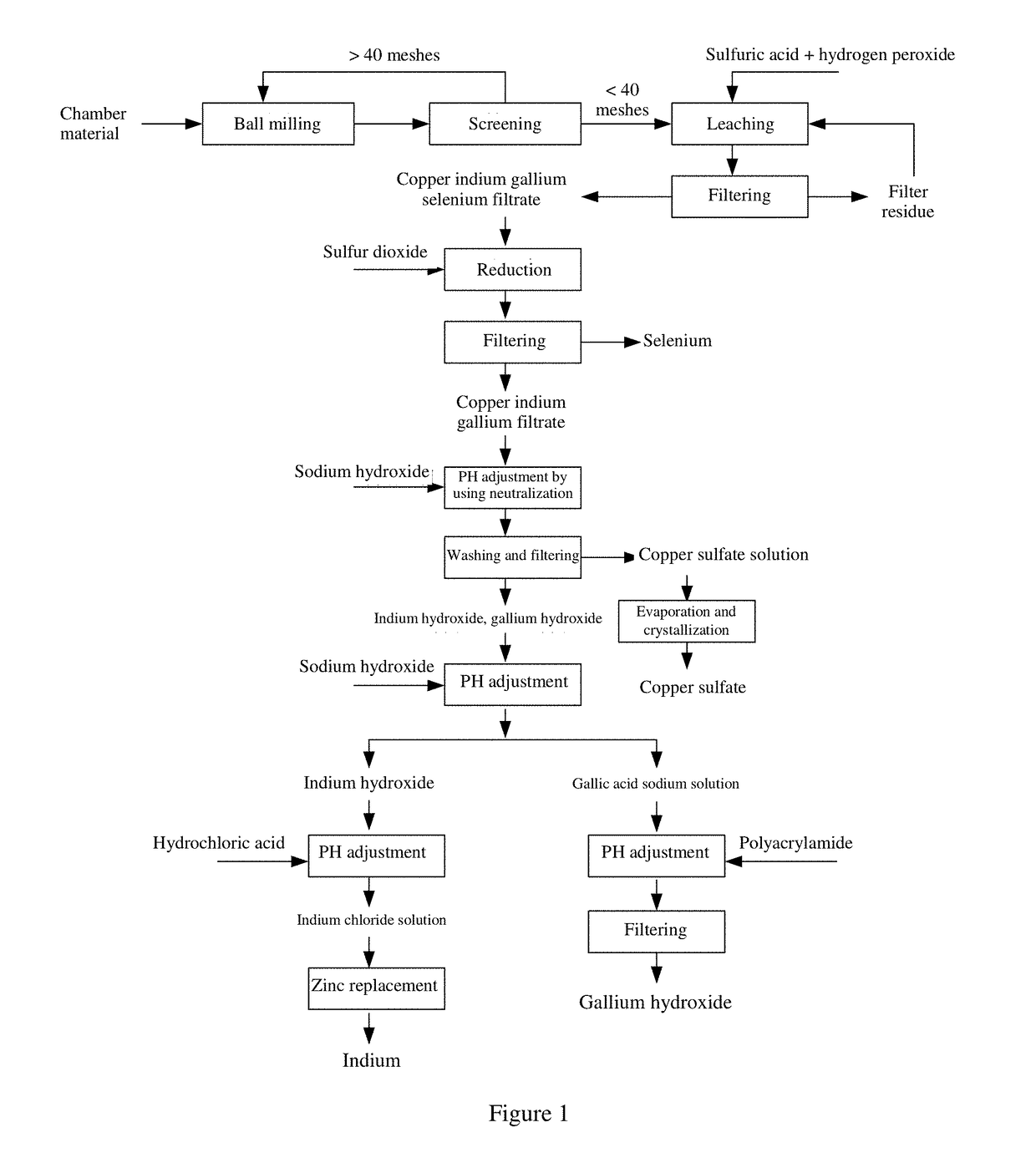Method for recycling copper indium gallium selenium materials
a technology of gallium selenium and materials, applied in gallium/indium/thallium compounds, chemistry apparatuses and processes, copper sulfates, etc., can solve the problems of increasing maintenance costs, power generation performance will gradually decline, and light-induced degradation, so as to reduce selenium, reduce power generation, and the effect of low cos
- Summary
- Abstract
- Description
- Claims
- Application Information
AI Technical Summary
Benefits of technology
Problems solved by technology
Method used
Image
Examples
Embodiment Construction
[0029]The embodiments of the present invention are further illustrated below with reference to the accompanying drawings.
[0030]As shown in FIG. 1, the method for recovering copper indium gallium selenide material according to an example of the present invention mainly includes the following steps.
[0031]In step A, 200 g of copper indium gallium selenide material was placed in a ball mill, ball milled to powders of below 40 mesh and dried at 100° C. for 4 hours.
[0032]In step B, concentrated sulfuric acid was diluted to 25%. 200 g of dried material was mixed with 25% concentrated sulfuric acid at a solid-liquid ratio of 1:5 and heated to 90° C., followed by introducing hydrogen peroxide at a rate of 8 ml / min at a stirring rate of 600 r / min and leaching at a constant temperature for 3 h. After the leaching was completed, the residues were filtered out to give a copper indium gallium selenium leachate.
[0033]In step C, the leachate was heated to 65° C., followed by introducing sulfur diox...
PUM
| Property | Measurement | Unit |
|---|---|---|
| temperature | aaaaa | aaaaa |
| temperature | aaaaa | aaaaa |
| constant temperature | aaaaa | aaaaa |
Abstract
Description
Claims
Application Information
 Login to View More
Login to View More - R&D
- Intellectual Property
- Life Sciences
- Materials
- Tech Scout
- Unparalleled Data Quality
- Higher Quality Content
- 60% Fewer Hallucinations
Browse by: Latest US Patents, China's latest patents, Technical Efficacy Thesaurus, Application Domain, Technology Topic, Popular Technical Reports.
© 2025 PatSnap. All rights reserved.Legal|Privacy policy|Modern Slavery Act Transparency Statement|Sitemap|About US| Contact US: help@patsnap.com

